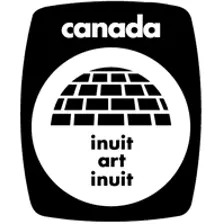Protecting Indigenous Knowledge Through Trademarks
Posted on April 22, 2025
Author: Karin Binder, Trademark Agent
This year’s World Intellectual Property Day highlights the topic of “IP and Music: Feel the Beat of IP.” Creative works such as books, films, plays, music, paintings, and sculptures are typically protected by copyright – a legal framework that requires the creative work to be in a fixed form (e.g., written or recorded) and tied to an author. Like most forms of intellectual property, copyright protection is time-limited. In Canada, the term is the author’s lifetime plus 70 years.
But what happens if stories, songs, and spiritual practices have been passed down orally since time immemorial, as is often the case with Indigenous knowledge and cultural expression? How can Indigenous communities protect their traditions from exploitation and ensure that their assets are protected?
Western intellectual property registration systems, with their requirement for novelty, time-limited validity, and ownership requirements, do not always align with Indigenous culture, which often emphasize collective ownership and knowledge-sharing. Despite this, IP remains a crucial tool for protecting and generating value from intangible assets.
Imagine you create a beautiful soapstone carving, inspired by your community’s traditions. One day, you see a big company mass-producing and selling exact replicas – without your permission, without acknowledgment, and without sharing the profits with your people. How would you feel?
Intellectual property rights can help prevent this type of exploitation, ensuring that creators receive credit, control, and financial benefit from their work. Moreover, owning IP rights can increase business value, generate revenue, enhance and expand marketplace visibility, create partnership opportunities, and facilitate access to financing.
All forms of IP protection offer effective ways to achieve this goal. Trademark protection in particular is a valuable tool, as unlike other forms of IP, trademarks can last forever, making them valuable assets for long-term protection.
The following forms of trademark protection may be of interest to Indigenous communities:
Ordinary Trademarks
An ordinary trademark can consist of words, designs, tastes, textures, moving images, mode of packaging, holograms, sounds, scents, three-dimensional shapes, colours, or a combination of these. Trademarks distinguish the goods and/or services of one person from those of others. In short: trademarks are source indicators. In Canada, trademarks are valid for 10 years and can be renewed indefinitely, as long as the registrant maintains an interest, continues to use the mark, and pays the requisite renewal fees. Registrations resulting from ordinary trademark applications can be licensed and transferred, like any asset.
Certification Marks
Certification marks are marks that are not used by the trademark owner on their own goods and/or services but the owner licenses the use of the trademark to parties whose goods and services meet a defined standards.
An example of a certification mark is the “Igloo Tag” program that was established by the Canadian government in 1958. The management of the program was transferred in 2017 to the Inuit Art Foundation (and the program is currently under review).
 [Source: Inuit Art Foundation]
[Source: Inuit Art Foundation]
The “Igloo Tag”, shown above, authenticates artwork created by an artist of Inuit origin. The program ensures that Inuit artists are fairly compensated for their work, improves their access to marketplaces, and protects their art from appropriation and unauthorized reproduction. The program also benefits the purchaser of the artwork by providing them with confidence that they are acquiring a genuine Inuit product.
Official Marks
Many indigenous communities use official marks (also called “Prohibited Marks” or “Section 9 Marks”) to protect their identity. These can be any badge, crest, emblem or mark that has been adopted and used in Canada as an official mark for goods or services. Official marks have a very broad scope of protection under the Trademarks Act, as they extend to all goods and services and do not expire. However, there are some limitations – official marks can only be obtained by public authorities, government agencies, certain non-profits, or universities. Additionally, there are issues with respect to the licensing and assignment of official marks.
Geographic Indications
Geographic Indications (GI) function similar to trademarks but identify products with a specific geographic origin. In Canada, GIs apply to wine, spirits, and agricultural products. A well-known example of a GI is “Champagne”. Only sparkling wine originating from the Champagne region of France is entitled to this designation. The Canadian Trademarks Office maintains a list of GIs. To obtain a GI protection, the responsible authority of the GI applies to have the name entered on the list of Geographic Indications. Once entered, the GI enjoys strong legal protection under the Trademarks Act.
Take Away
Intellectual Property play a critical role in protecting creative works, inventions, and brands. While not all indigenous knowledge and cultural expressions fit neatly into traditional IP frameworks, a comprehensive strategy should include:
• Register trademarks and other forms of IP whenever possible
• Monitor the marketplace for any unauthorized or improper use
• Educate the public on Indigenous knowledge and cultural expressions to promote awareness and respect
• Support Indigenous-led businesses
• Advocate for legal frameworks that recognize collective ownership and traditional knowledge.
